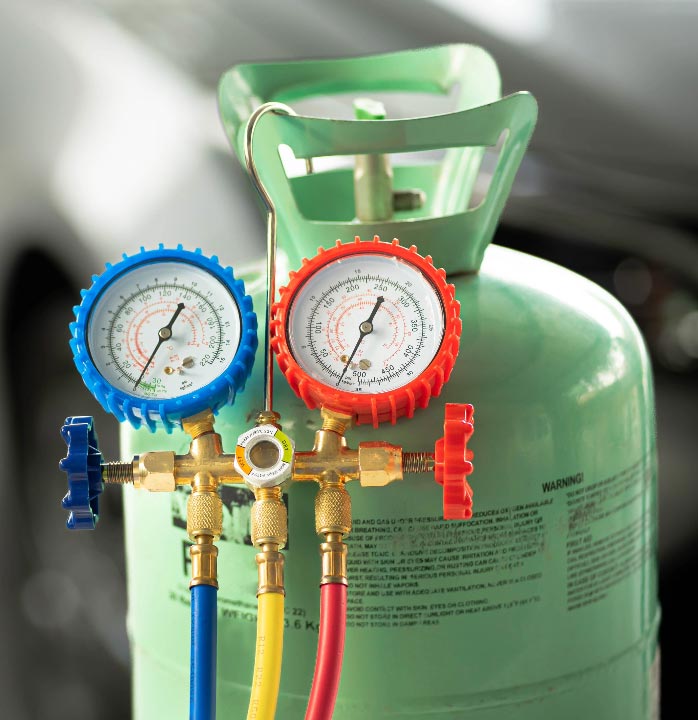Running a commercial facility is no small task. Facility managers juggle everything from energy efficiency goals to equipment maintenance schedules, all while keeping an eye on budgets. But there’s one area that often hides in plain sight until it becomes urgent: EPA regulations on refrigerants.
If you manage buildings with chillers, rooftop units, or split systems, you’re not just responsible for keeping occupants comfortable—you’re also responsible for compliance with federal laws that govern how refrigerants are handled. These laws are more than red tape; they protect the environment and directly affect your operating costs.
At Refrigerant Services LLC, we’ve seen how confusion around EPA regulations can trip up even the most seasoned managers. To make it easier, let’s walk through the “story” of refrigerant regulations, and what you, as a facility manager, need to know to stay compliant, efficient, and ahead of the curve.
The Story Begins: Why Regulations Exist
Decades ago, refrigerants like CFCs and HCFCs (remember R-12 and R-22?) were used everywhere. They worked well for cooling but carried a hidden cost: they depleted the ozone layer and contributed to climate change.
The Environmental Protection Agency (EPA), under the Clean Air Act, stepped in. Starting in the 1990s, phase-outs began. First R-12, then R-22. Now, even HFCs—though ozone-safe—are being phased down because of their high global warming potential (GWP).
For facility managers, this means the refrigerants you use today may not be legal to purchase or may carry restrictions tomorrow. Staying informed isn’t optional—it’s essential.
Act I: The Current Landscape of EPA Refrigerant Regulations
So, what’s on your plate right now?
- Leak Repair and Recordkeeping
The EPA requires that systems containing more than 50 pounds of refrigerant be regularly inspected for leaks. If a leak rate exceeds thresholds (10% for comfort cooling, 20% for commercial refrigeration, and 30% for industrial process refrigeration), repairs must be made within 30 days. Detailed records must be kept for all leak inspections and repairs. - Refrigerant Recovery
Venting refrigerants into the atmosphere is strictly prohibited. EPA-certified technicians must recover refrigerant before servicing or disposing of equipment. This means facility managers need to work with contractors who are EPA Section 608 certified and compliant. - Refrigerant Transitioning
HCFCs like R-22 are fully phased out—no new production, no import. If you’re still running older R-22 equipment, you’re likely relying on recycled or reclaimed refrigerant. HFCs like R-410A are next in line for phasedown under the American Innovation and Manufacturing (AIM) Act, which aligns U.S. regulations with global agreements like the Kigali Amendment.
Act II: The Hidden Costs of Non-Compliance
Let’s imagine two facility managers:
- Manager A keeps meticulous refrigerant records, schedules proactive leak inspections, and has partnered with a service provider who offers refrigerant recycling and exchange programs. When EPA auditors come knocking, Manager A is ready. Fines avoided, reputation intact, equipment efficient.
- Manager B, on the other hand, doesn’t have clear records, relies on outdated R-22 equipment, and isn’t aware that refrigerant recovered from one unit must be properly handled or recycled. When an EPA inspection happens, Manager B faces steep fines—sometimes up to tens of thousands of dollars per day, per violation.
The difference? Awareness and planning.
Act III: The Facility Manager’s Roadmap to Compliance
So, how do you become Manager A? Here are the key steps:
- Know Your Equipment Inventory
Create a detailed log of every system, its refrigerant type, and charge size. This helps you determine which EPA rules apply. - Partner with Certified Experts
Always work with an EPA-certified refrigerant service provider. At Refrigerant Services LLC, our recycling and exchange programs ensure refrigerant is managed in compliance with federal law. - Implement a Leak Detection Program
Don’t wait for a system to fail. Proactive leak detection reduces refrigerant loss, keeps you compliant, and saves on energy costs. - Plan for the Future
If your facility still runs on phased-out or high-GWP refrigerants, start budgeting for upgrades. Equipment that uses next-generation refrigerants or variable refrigerant flow (VRF) systems can offer long-term savings. - Document Everything
The EPA requires recordkeeping of leak inspections, repairs, and refrigerant disposal. Proper documentation is your best defense in the event of an audit.
The Final Chapter: Turning Compliance into a Competitive Advantage
Here’s the twist: being proactive about EPA refrigerant regulations doesn’t just keep you out of trouble—it can save money and strengthen your facility’s sustainability profile.
- Recycling refrigerant lowers your reliance on costly new or reclaimed gases.
- Efficient leak management cuts down on energy waste.
- Staying ahead of phaseouts positions your facility as environmentally responsible, which resonates with tenants, investors, and customers alike.
At Refrigerant Services LLC, we believe compliance doesn’t have to feel like a burden. With the right strategy, it becomes part of a bigger story: one where facility managers lead the way toward efficiency, sustainability, and smart operations.

Conclusion
EPA refrigerant regulations may seem complicated, but for facility managers, they boil down to this: know the rules, work with the right partners, and plan ahead. Doing so not only ensures compliance but also protects your budget, your equipment, and your reputation.
At Refrigerant Services LLC, we specialize in refrigerant recovery, exchange, and buyback programs that make compliance easier. If you’re ready to take the next step in managing refrigerants responsibly, we’re here to help you write the next chapter in your facility’s story. Contact us today to schedule an R-22 recycling or buyback service and make the most of your old refrigerant.
54000 Grand River Ave
New Hudson, MI 48165
T: 844-787-3232





